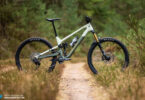Orange Bikes Factory Visit
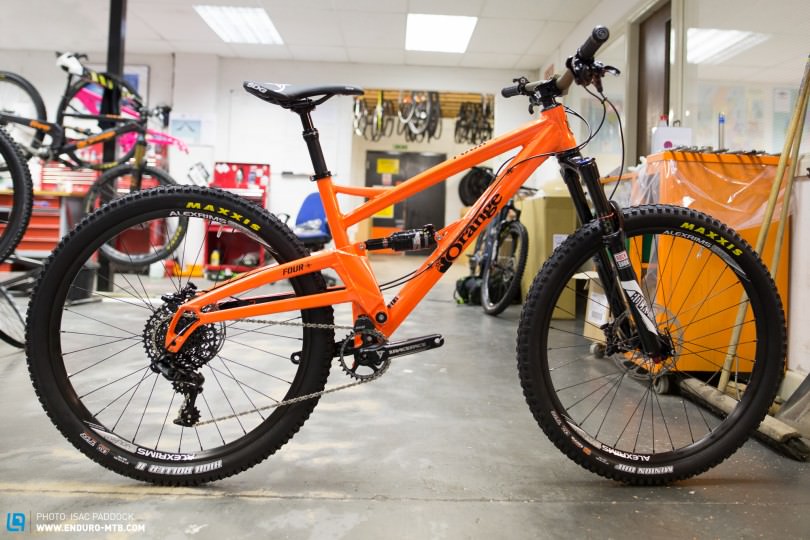
Orange Bikes is a name synonymous to the UK riding scene, their single pivot design bikes have been a part of the British mountain bike scene for as long as we can remember. Looking at the distinctive frame silhouette, people could be forgiven for thinking nothing much changes at Orange, with their use of alloy only, no linkage (well maybe once!) and a design deemed by many as Marmite (love it or hate it). We took a trip to Orange to meet the new boss Ashley Ball, where we found out how so much more has been going on behind the scenes and his proposed future plans for the Halifax brand. Here is how it started:
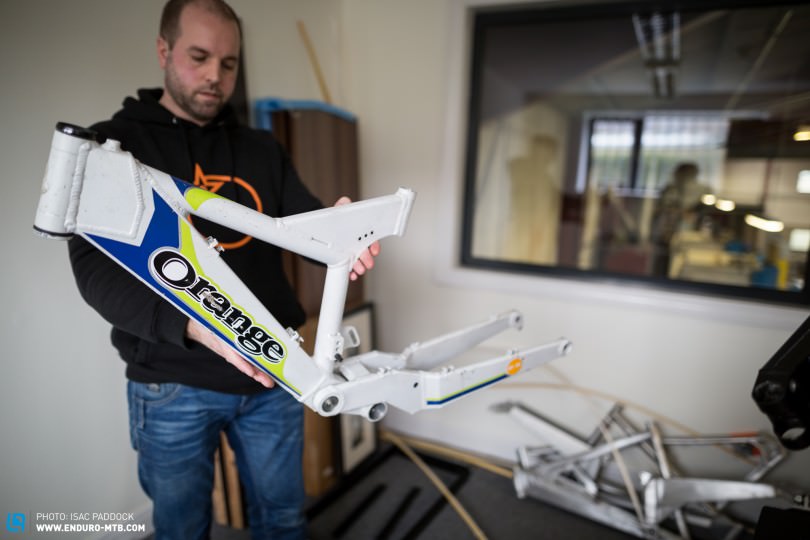
During one of the UK bike shows a couple of months ago, we were lining up the new Orange 4 for some ‘best in show’ shots. One of the guys from Orange shouted out “hey we don’t like these dodgy looking blokes with tattoos around our bike!” All the other Orange employees laughed, he was a normal looking bloke, who I’d never met, just being cheeky at my expense and having a laugh with the lads; ‘this is the type of bloke I can get along with’ I thought! Within half an hour we were all chewing the fat and having a laugh, a factory visit had been provisionally arranged. There were no emails, no ‘we’ll have to run that by our Marketing Director, blah blah blah’, just a handshake and a day booked, the good old British way!
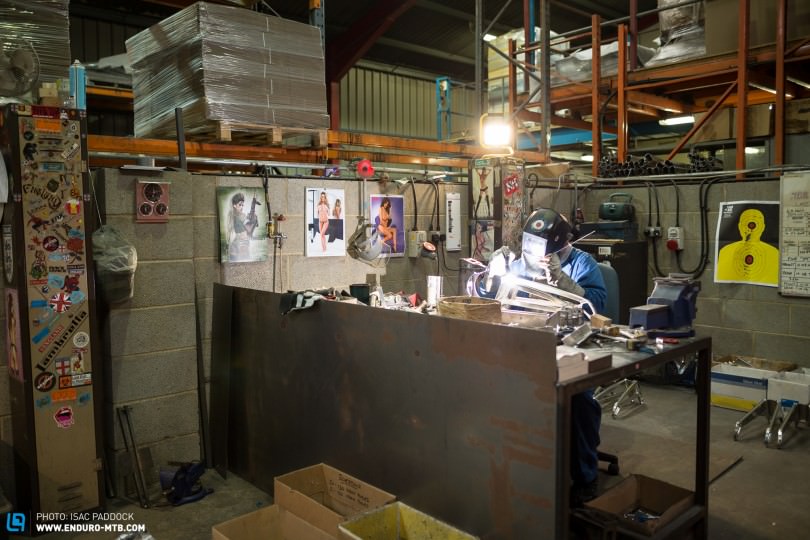
I had visited Orange Bikes back in 1999, it turned out that back in the day the panel beaters workshop where the frames were made had just been bought by Ash, as a very young metal worker himself. The panel beaters grew along with Orange but always remained separate, until very recently when Ash decided to make a bid to buy the company. Ash himself I have to say is one of the most enthusiastic and positive blokes I have met, his friendly and relaxed manner is a real joy to behold in this day of faceless corporations and bland Audi drivers in suits and rimless glasses! We sat down and had a chat with the man himself, where he revealed some fantastic Orange facts.
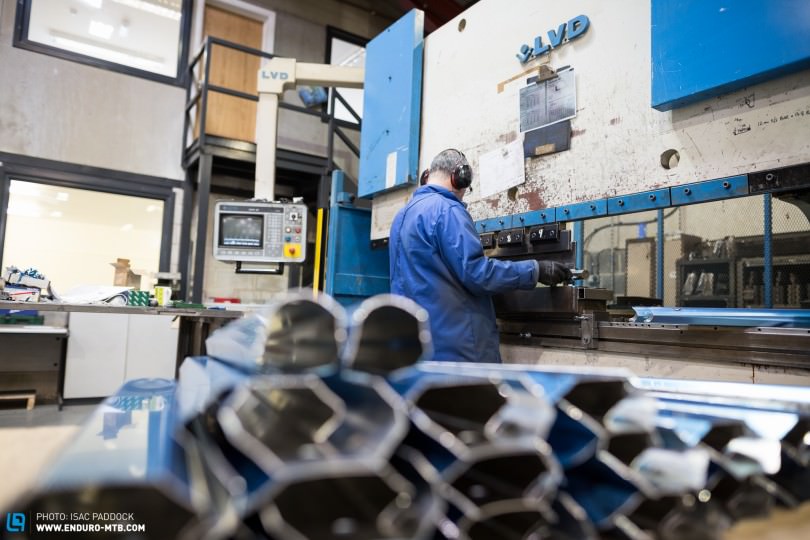
Enduro: When did the opportunity become available for you to buy Orange?
Ashley Ball: We had been talking about it for some years, I had tried to do it some years ago, Steve and Lester (original owners) had been looking at other people to come in and market the business. When you are looking at retirement, you’ve got to look at the numbers and there was quite a lot of interest from some pretty big players; and those things had to run their course. I think for me and a lot of people who worked for both companies, it was quite a stalling time, it never felt like anything bad was happening, but when you don’t know what’s happening I would certainly say it can have a negative effect on the business. Anyway as the process went on it started to become apparent that certain things were and weren’t going to work. Fortunately Steve and Lester had quite strong feelings about who the business went to, so you’ve got the balance of what’s going to happen to the money and what will happen to the thing that was basically our life’s work. In the end we came to an arrangement between us that meant it was possible for me to take over.
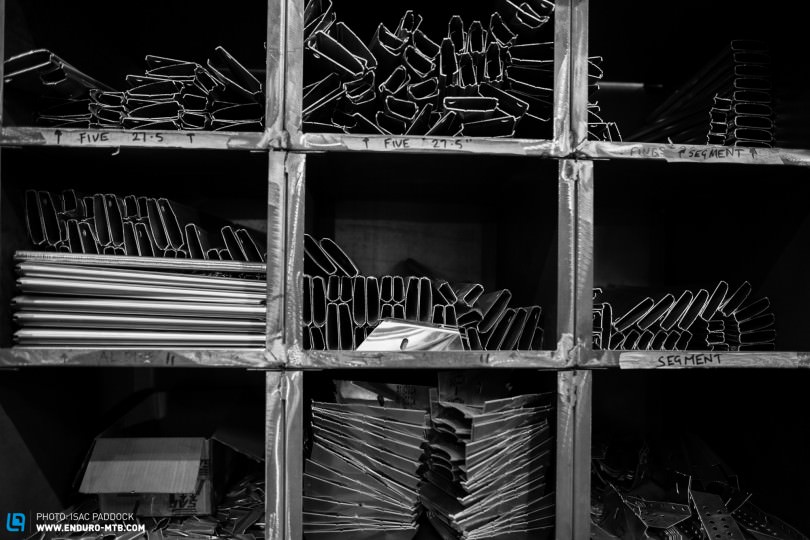
Enduro: Were you worried during that process that a faceless corporation could get a bid in and everything could go to pot?
Ashley Ball: I think there were quite a few companies that were like that, they had private equity sniffing around, there were a couple of the big distribution companies looking at it and we were wondering just how that could work with the philosophy of Orange as a brand. Then there was the development of the product, we were constantly on the move with the development, but when it comes to people like myself and when it comes to investing in the frame manufacturing side of the business, are you going to carry on doing that, not knowing what could potentially happen; no way! So anyway we went through this process, the worrying thing for me being that in the end I had to find a lot more money. There were people with a lot deeper pockets than me looking at it, I had to be competitive because life is what it is! I think it’s safe to say that those guys worked with me as well and were patient in that fact it perhaps took a bit longer to get a deal done, because I didn’t just have the money sat there. But eventually we got to the end result; they were happy, I was happy and certainly everybody that works here was happy, because we were able to achieve it, that’s for sure.
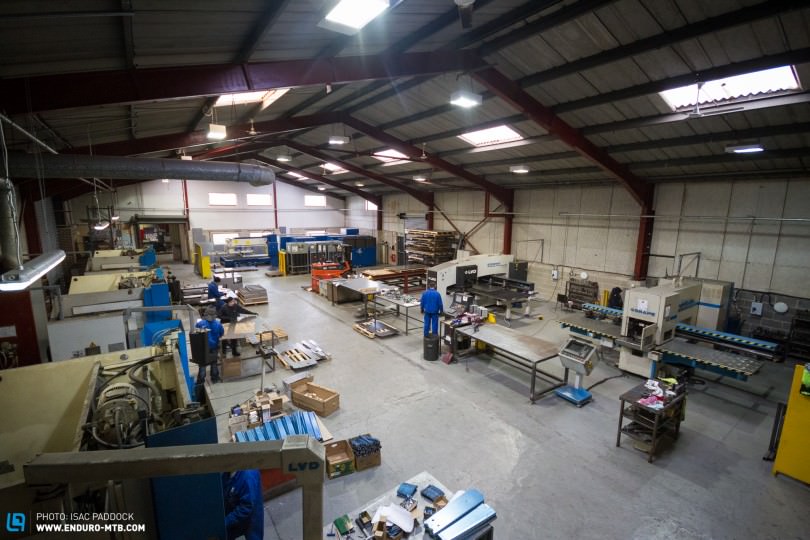
Enduro: So after you had done the deal, what are your future plans for Orange as a brand and a company?
Ashley Ball: For me in particular, we have to look at what we do, what we can do, what we already do and how we can do it better. That’s the key thing for me, as an engineer and as the guy that’s been responsible for building the full suspension frames for 19 years. Now that we have full control from a piece of aluminium to the product that goes out to the customer, anybody in their right mind can see that those efficiencies and working towards the same end goal is going to have a massive effect on the finished product. We’ve always been a forward thinking brand, everybody looks at the simplicity of the design and things like that, but that’s not because we don’t develop things. We’ve done linkage frames, we’ve developed countless prototypes of linkage frames, we’ve looked at different materials, we’ve prototyped different types of material, we are doing this all the time. The difference with Orange is that we will only sell products to our customers that (a) we believe in and (b) are the best they can possibly be.
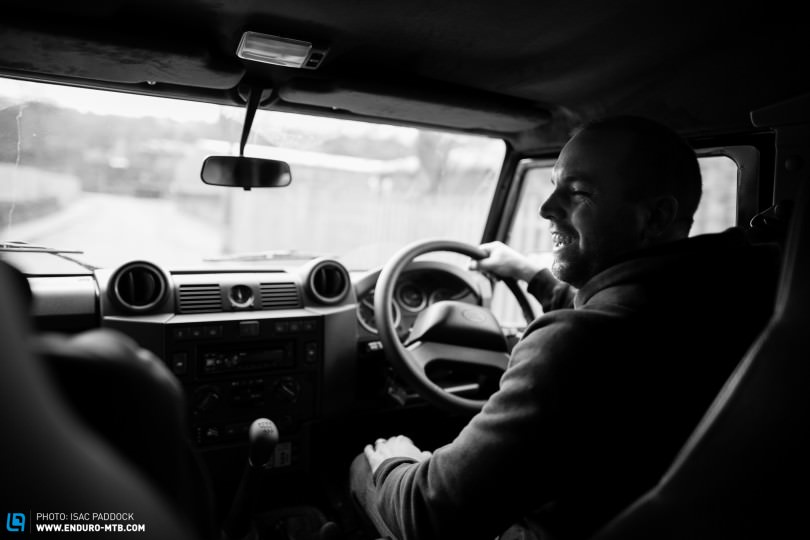
Enduro: So can you tell us about your research into the use of carbon fiber?
Ashley Ball: Basically for a couple of years I headed a team that did extensive research into carbon fiber development. Obviously, I would be because I head all the R&D projects, it doesn’t matter if it’s made out of carbon, titanium, steel, whatever, if the customer is interested in it, we have to look into it as a company and do the tests. Basically over that period the team put a lot of time and effort in, we worked with outside sources, we put a lot of money and time into it and the results were not what we would consider to be acceptable. The product that the customer would have been getting was not going to be as good as the product we have got out there now. I can say that wholeheartedly and genuinely because I’ve looked at the product and I was part of that team. Yeh, we shaved maybe 150-200g out of a frame, but that’s nothing, the costs were prohibitive for that sort of weight saving, the feel of the bike wasn’t right, the suppliers were not wanting to supply us with the designed bike we were wanting them to do; they wanted us to follow existing designs. That’s not a way to produce, that’s a way to save money, sell bikes and create numbers, that’s not a way to actually create the best product you can make. As a sideline to that, we are now also looking at new alloys, new heat treatment processes, new construction techniques on the aluminium stuff and the aluminium frame weights are coming down and down and down. Whereas the weights on the carbon stuff, well you look at other manufacturer’s stuff in carbon they are putting out there now, they are getting heavier. No one’s advertising it, but you look at where carbon frame weights were two or three years ago compared to now, because of the reliability and durability issues they are having they are needing to make the frames thicker and heavier to get them to last. So basically they are getting heavier and we are getting a lot lighter, the feel of the material is a lot better, it suits our designs, we can manufacture in the UK. This means we can control our development, we can develop quickly, we can get products to market quickly and that’s the decision we have made.
For me with Orange as a whole, I want to broaden the whole range, so that we can appeal to more people, that way and without a shadow of a doubt we should be going and exporting abroad. we should be proud of what we are doing, there are people out there that want to buy our product, but they don’t have access to it, that has to change.

Enduro: What about how wild geometry can be getting nowadays with the long, low, slack current trend?
Ashley Ball: We have always been low and slack, I don’t think anyones has ever sat on an Orange bike and said anything other. I mean one of our defining characteristics is you are going to have a relaxed geometry and a low bottom bracket. Those things will not change, they are what make Orange Orange! As you know yourself the effective top tubes on our bikes have been getting longer over the last couple of years, that again is through development, it’s not just about chasing other manufacturers numbers and staying current just for the sake of it. Now as bikes get lighter, geometry is changing and wheel sizes have changed, it allows you to change the feel of the bike with longer top tubes etc. If you look at the bikes we are putting through at the minute, the larger sizes, the standover heights are now starting to reduce on our models as well, which is then giving people more choice of frame sizes. Although we might not go completely wacky, doing a 15-16 inch frame with an XL effective top tube, but what you will find is that we are offering more choice to our customers, with the frames being slightly longer in the effective toptube, our customers now have the choice of sitting on a medium or a large, depending on what they want and keep both camps happy.

Enduro: So finally as a rider yourself, what is your preferred model around here for a ride?
Ashley Ball: Well it’s either a 4 or a Segment.
Next up Ash gave us the tour of both factories, his panel beating place being where the raw materials come in, mostly sheeted. These then go through various presses, and machines, before traditional welders get to work on the 6061 aluminium and take it through the various stages of construction. It was really interesting seeing these chaps doing proper man-made construction of these frames during the processes of pressing, welding, heat treatment and jigging, to the point where the frames are then sent over to the other nearby Orange main HQ for the final processes.

Ash drove us back over to Orange HQ, he is a cheery chap, happy with what they are achieving, proud to be British, as he escorts us in his Land Rover Defender with his best work companion, in the form of his three-legged Labrador dog, who travels everywhere with him in the UK. When at the HQ we are shown around, where the frames come in and go through the powder coating colour treatment and build processes. Here you also have the main offices of the tight team that is essentially the backbone of the Orange brand.

Finally, we pick up the new long term test Orange 4 for one very excited Isac (more on this coming to the websites soon). This thing looks the nuts and comes in at a very acceptable 12.2kg (27lbs) as riders should expect to see weights of future models of Orange’s drop considerably with new construction techniques. With Ash at the helm, weights coming down, reliability and turnaround in trend with the use of single pivot, plus the simplicity and ride characteristics of alloy compared to the often harsh ride of carbon, surely Orange can only get bigger, better and more desirable and we wish them all the luck in the future.
For more information on the bikes and company head to the Orange Bikes Website.
Words: Jim Buchanan Photos: Isac Paddock
Did you enjoy this article? If so, we would be stoked if you decide to support us with a monthly contribution. By becoming a supporter of ENDURO, you will help secure a sustainable future for high-quality mountain bike journalism. Click here to learn more.







